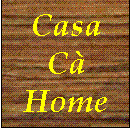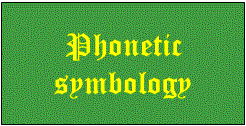


Notice to be read (in case you didn't)
Structure of the Piedmontese
Main differences with respect Italian
Invariance at plural of masculine nouns, and those feminine forms not ending by "...a" at singular
We have seen that piedmontese nouns and adjectives are invariant at plural, and the main exception is given by feminine nouns and forms which, at singular end in "...a", and this is true with few further exceptions which we will see in Grammar. Both in Italian and in French, on the contrary, there are very few names and adjectives that are invarinat at plural.
Feminine of adjectives
We have also seen that in Piedmontese there are few adjectives having the same form for masculine and feminine, and this is similar to what happens in French, while in Italian all the adjectives belonging to the third class are invariant in gender, with few exceptions.
Personali verbal pronouns
In the previous page we spoke about personal desinences of the piedmontese verbal voices and, even if we did not underline this, it is clear that in the most of the cases these are not six different desinences but there are three pair of equal desinences. When there is not an explicit subject the fact could be a problem. In Piedmontese the point is solved in a particular exclusive way, naturally born in the centuries: In Piedmontese exists a series of personal verbal pronouns associated to the verbs, whose using rules will be seen in Grammar. This series does not exist neither in French nor in Italian.
Personal interrogative pronouns
There is another series of pronouns in Piedmontese which does not exist in French and in Italian. This is the series of personal interrogative pronouns. They are different from verbal personal and personal pronouns and can substitute them in their logical function. They come after the verb and are connected to it with a dash. Simple and composite tenses have different interrogative forms. Using rules will be seen in Grammar, and we notice that in French, in the interrogative form, the subject is postponed to the verb, with a mechanism in some way similar.
Negative conjugation
Also the negative piedmontese sentence has a construction which is different both from the italian one and the french one. The two used adverbs nen, pÓ have a different use and value with respect the two french adverbs ne, pÓ as well as with respect the italian adverbs non, mica. Simple tenses (without auxiliary) and composite tenses (with auxiliary) have different negations. See always Grammar and Syntax.
Complex pronominal particles
As it is for Italian, the complements (dative and accusative) which are expressed by means of pronouns, give rise at pronominal particles, that are complex when the two complements are present at the same time. But in Piedmontese also the personal verbal pronoun, always present, contributes to the pronominal particle. This fact gives rise at particles that are more complex, and that haven't a correspondence in Italian (and not even in French).
Construction of sentences with complements given by personal pronouns
There are some differences in these sentences, in particular when the tense of the verb is comosite (auxiliary plus past participle). In this case the position of the particles changes in the sentence both with respect the Italian and the French. Particular situations happen while using interrogative personal pronouns and place adverbs (here, there ---> in Italian vi, ci).
Complements with the relative pronoun "che" (who, whom, which)
In Piedmontese the relative pronoun "che" is used whenever possible without prepositions for every complement (in Italian the correspondent use is mainly limited to nominative and accusative). The correct sense of the sentence is often obtained by adding opportune particles (pronominal or adverbial) as we will see in Grammar and in Syntax. The similar pronoun "qual" (= italian "quale"), which is still piedmontese, is used as less as possible.
Relative pronoun "dont"
The italian relative pronouns "di cui, in cui", corresponding to the english "of which, in which" respectively genitive and place complement, in Piedmontese use, whenever possible, the pronoun "dont", which is invariant. This use is quite similar to the french use of the same pronoun (different pronounciation), we'll see this in the Grammar part. In Italian there is not a corresponding word.
Some particular uses of the parts of the speech
Article. Important for distinghishing gender and number, it is rejected by many possessive adjectives. Some particularities there are with nouns of places, rivers, and so on.
Noun. Some particularities with some specific noun. Particularities for appellatives and titles of persons. Some particularities with declensions. Differences between name and adjective when a word can be both.
Adjective. Poarticular constructions for relative and absolute superlative. Comparisons used in superlative sense. Idiomatic expressions for the degree of the adjective and locutions having value of adjectives (as we will see in Syntax). Often particular comparisons are used instead of the superlative, and often descriptive adjectives are accompained by comparisons (equality comparative) which specifies them in a quite witty way. They are usual expressions, and not only in particular cases. We have to note that in Piedmontese the most of ordinal numeral adjectives are missing, replaced by particular locutions are used.
Pronoun. Something has been already seen above. There are many cases in which the repetition of pronouns is required (explicative or also logically redundant) even if the complement is expressed.
Verb. The "perfect tense" exists in Piedmontese, but for more than two hundred years has not been used in the spoken language and in written prose (used in some poetry, while writing in rhyme. This make the Piedmontese close to oral French, where the perfect is very few used. We note, anyway that in all the conjugations the second singular person of the perfect ends in "...s" (on this purpose, see the subdivision criteria for neo-latin languages). Some verbal particularities there are for some type of sentences (like optative and dubitative). In composite tenses the past participle is not concordant with the object. Italian transitive and intransitive verbs are not the same as they are in Piedmontese.
Preposition. Also in this case we have some different uses, connected with the different way of expressing some complements. The preposition dë, ëd ( = italian "di", english "of") has a larger use in Piedmontese, connected with a larger use of the partitive. There are some very usual cases in which a pair of prepositions is used (according to the cases, the prepositions can be different or the same).
Adverb. There are some particular adverbial constructions. Very little use of adverbs ending in "...ment", (usually considered as "italianisms" to be avoided) while in Italian the use of adverbs ending in "...mente" is very common (and also in French). Two different degrees of affirmation, and two different negations. A series of "french style" adverbs.
Conjunction. Some particularity. Repetition of similar conjunctions is quite common and sometimes required. The use of the conjunction "che" ("that") in Piedmontese is much larger than in Italian.
Exclamation. There exist some exclamative locutions very used that have a construction similar to the french one. Some of these exclamations, in Piedmontese are very original.
The sentence and the complements
There are some complements that are expressed in a different way, in Piedmontese, with respect the Italian, as well as some type of sentence. We will speak about this later in Piedmontese Syntax.
The vowel prosthesis
In Piedmontese there exists the mechanism of "prosthesis", for which the words starting by "s..." followed by consonant, or words starting with particular groups of consonants (like for example "fn...") have to add an initial ë whenever they are preceded by a word ending with consonant.
Euphonical consonants and vowels
Both for auxiliary verbs and pronominal particles, there are many cases in which there is the addition of a letter having as a function to make the pronounciation easier (euphonical letter). As usual see Grammar and Syntax for details on this use.
Words without a direct corresponding meaning in Italian
There is a series of piedmontese words that don't have an italian word that directly expresses its full meaning. A sentence, or a group of words, or a noun plus an adjective, is required, in Italian, for translating these words.
These are only the most evident differences. In Piedmontese there is a long series of idiomatic sentences and particular locutions that are very classic of the Piedmontese and which we will speak about later, in the related section.
Before studies were carried on in a scientific way..
... on the piedmontese language, this latter was easily indicated as a dialect (this was more than a century ago, according to some writers and literates, still so far only for the italian government). As such, anyway, it had some location problem. It is curious to look at how they spoke about it:
- ... a mix of Italian and French, with some latin, greek, hispanic, teuronic words ...
- ... beyond italian words, or french or latin ones there is a clear predominance of gallic words ...
- ... it is French, only the pronounciation is the italian one, the remaining is French ....
- ... an italian altered or truncated, with some french word sometime pure and sometime altered ....
- ... a mix of Italian and Provençal ....
- ... Dante Alighieri, in hisl "De vulgari eloquentia" defined it a very filthy vulgar which, due to the influence coming from languages beyond Alps, was so degraded to be absolutely incomprehensible to him, and it couldn't be considered an italian vulgar ....
- ... and so on ...
Conclusions
Sometimes it can happen that someone think at the presence of different dialects in Piedmont, without a unique language, and base this asserion on the fact that there are things having different names in different places. There are of course local expressions for Piedmontese, exactly as it happens in Italian (the most evident), In French, in English, and so on. Even in Latin this happened. The structure of the Piedmontese is the same everywere. Different way of calling things is just a richness of the language. It would be sufficient taking a whatever dictionay of synonyms of whatever tongue. For example, in Latin to limp was claudere (second conjugation) but also claudicare (first conjugation), and probabliy in one place one was preferred, ant the other somwere else. Still Anxiety was anxietas, anxietatis, but also angor, angoris, and alsosollicitudo, sollicitudinis. These words are deeply different, but can always be recognized as Latin words. The same apply to Piedmontese.
A curiosity
People, in Piedmont, of mother tongue "Patois" (Provenšal) in high alpine walleys, speak as a second mother tongue the Piedmontese as it is spoken in Turin, even if they never studied it, then they speak Italian (as per the law), and in the majority of cases also French. There are many holidays celebrated together by Italian and French villages near the border. This certainly follows from the period in which the two side of the mountains were both Dauphinate, or both Savoy's Dukedom, but mainly from the fact that mountains can only separate armies and states, not people. On both sides of the mountain the life is the same, same snow, same sun, same wind. Same the cows on meadows, same the forrests, same the stone houses around same stone bell towers. Every border on mountains is always a wrong border. Who lives in the plane (and of the plane) maybe is not able to understand this. who has his root on mountains (as the writer) strongly feels this fact.
![]()


